#speech processing projects using matlab
Explore tagged Tumblr posts
Text
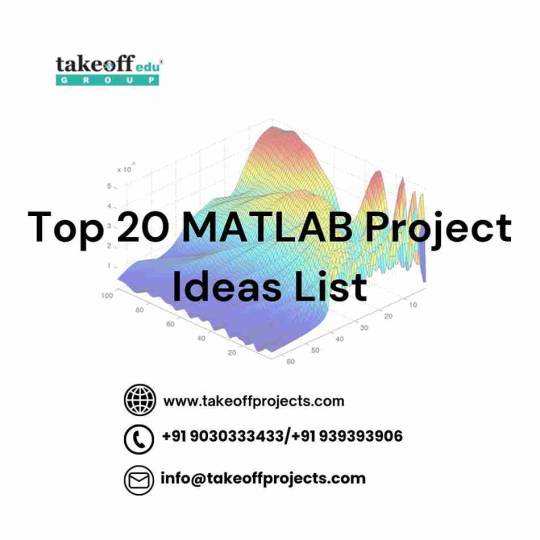
Top 20 MATLAB Project Ideas List
1. Face Recognition System: Establish an approach that identifies faces, and then checks the information provided with image processing techniques.
2. Speech Signal Analysis: Which are then stored for analysis of features such as pitch and intensity as well as individual phonemes.
3. Object Detection Using Deep Learning: Use the machine learning technique to teach the neural network that it is working with to detect objects on images.
4. Simulink for Electric Vehicles: Models and simulates electrical vehicle behaviour.
5. Digital Image Watermarking: Acquire and remove watermarks as a form of protection for material posted on the Internet.
6. Automatic License Plate Recognition: Recognize license plates of the vehicles.
7. Heart Rate Monitoring System: Measure the privacy using ECG signal analysis of the heart rate of a patient.
8. Cryptography System: Further create a mechanism for encryption and decryption.
9. Renewable Energy Modelling: Did or designed systems for the generation of solar or wind energy.
10. Weather Forecasting Tool: Forecast climate conditions from spread market datasets based on time-line records.
11. Edge Detection: The raw imagery requires the creation of new algorithms aimed at detecting edges in images.
12. Signal Compression: Use even some of the technological advance techniques such as wavelet transform for data compression.
13. Stock Market Prediction: Forecast up or down movements in stock prices with artificial intelligence.
14. Lane Detection for Vehicles: Detecting road lanes in videos.
15. Audio Noise Reduction: Remove noise from audio frequency and sounds.
16. Medical Image Analysis: Interpret MRI or CT scan images.
17. Robotics Path Planning: Teach robots how to move in and around with minimal wastage of time.
18. Fingerprint Recognition System: A biometric authentication should be developed.
19. Data Clustering Warning: Use k-means to cluster datasets.
20. Traffic Flow Simulation: Simulate and simulate traffic systems.
These projects cover the basic to the intermediate level and provide numerous ways to implement the use of MATLAB.
#embedded#matlab#projects#engineering#students#imageprocessing#imageanalysis#takeoffedugroup#takeoffprojects
0 notes
Text
Machine Learning Training Online

You need to learn it to train machines like humans through trial-and-error methods. There are multiple other things you need to learn, including how reinforcement learning works, Markov Decision Processes Q-learning algorithm. Then our machine learning course syllabus will give you a structured outline of subjects and topics to learn. Collaborates with leading educational organizations to expand the reach of deep learning training to developers worldwide - online data science course.
Machine Learning courses are basically outlined at developed and novice levels and may be pursued at the student's convenience and against a particular enrolment cost. While not all the courses require you to learn Python, C++, having some familiarity and background with these programming languages is worthwhile. Originating from the IPython project, it offers a comprehensive framework for interactive computing, including notebooks, code, and data management.
What distinguishes machine learning from other computer guided decision processes is that it builds prediction algorithms using data. Some of the most popular products that use machine learning include the handwriting readers implemented by the postal service, speech recognition, movie recommendation systems, etc. Machine Learning is a pathway to the most exciting careers in data analysis today - Best data science institute in delhi.
Machine Learning course, available on our online website, is a popular course option that has introduced countless learners to the world of machine learning. As one of the pioneering online courses in the field, it provides a comprehensive introduction to machine learning algorithms, including supervised and unsupervised learning, and deep learning. Learners get hands-on experience with Octave/MATLAB for coding assignments and gain a solid foundation in machine learning theory. For more information, please visit our site https://eagletflysolutions.com/
0 notes
Text
image processing projects with source code for engineering students

The Takeoff Edu Group brings in creative image processing projects with source code for engineering students. Learn about computer vision, algorithms involved and sharpen your skills in this process. Apply your academic experience through our projects, that invite creative ideas and practical involvement in the field of image processing.
Latest image processing projects with a source code
Content-Based Image Retrieval Process for Speech Annotated Digital Images
Contrast Enhancement of Medical Images Using Statistical Methods with Image Processing Concepts
Colour Correction Based on CFA and Enhancement Based on Retinex with Dense Pixels for Underwater Images
Medical Video Watermarking Scheme for Telemedicine Applications
Combining highlight removal and low-light image enhancement technique for HDR-like image generation
Standard image processing projects with a source code
A Multi-Stage Framework with Context Information Fusion Structure for Skin Lesion Segmentation
Algorithm of Weed Detection in Crops by Computational Vision
Single Image Dehazing Using Dark Channel Fusion and Haze Density Weight
Denoising of Hyper Spectral Images Using Low Rank Matrix Factorization
Takeoff Edu Group can be your choice for all image processing projects with a source code, and you will find a world of opportunities in front of you. Our wide variety of activities enables students to obtain practical knowledge, acquire required skills, and stimulate their imagination. Ensure your academic journey is successful when you engage our expertise to boost your learning. Come along on the journey to victory with us. Visit more information: https://takeoffprojects.com/image-processing-projects-with-source-code Meta Tags: Image Processing Projects, Engineering projects, Final year projects, academic projects, MATLAB projects, CSE Projects, EEE Projects,
0 notes
Text
Exploring the Potential of Neural Networks In Matlab Projects
At Takeoff Edu Group, we are a team of experts that help beginners to explore the basics details of Neural Network Projects in MATLAB. The core of our curriculum is the combination of the theory with the practice, which allows students to be well-versed in the concept of neural networks. Participants acquire the necessary knowledge through practical projects. This learning process enables them to solve particular problems boldly. Solve the mysteries of Matlab and neural networks together with us to increase your expertise to the next level.
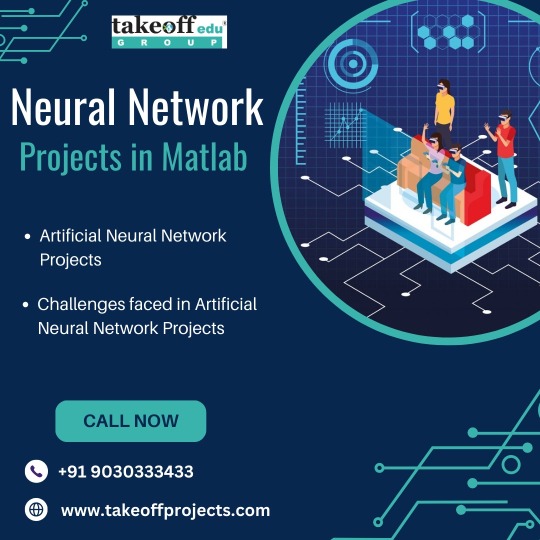
In Matlab Neural Networks Projects, potential users will be taught to use the Matlab programming language for the development and experimentation of artificial neural networks (ANNs). The neural networks are system of computers approved on mimicking the structure and function of the human brain. comprised of connected nodes called neurons, which process and spike the information.
In MATLAB users can develop neural networks in many forms, for example, feedforward neural networks, convolutional neural networks (CNNs), and recurrent neural networks (RNNs). This way they can be made to recognize complex patterns, to classify data, to make predictions and to do this or that.
The user-friendly interface and wide library of tools for the machine learning and deep learning in the Matlab package are one of the key advantages of using it for neural network data science projects. MATLAB functions, and algorithms for designing training and evaluating neural ensembles ensure accessibility to both experienced users and beginners.
Matlab provides a graphical interface through which a user can create models architecture, adjust parameters as well as gather performance level statistics to fine-tune the model. And on the other hand, Matlab assures the modularity of the neural networks with other techniques and algorithms thus allowing for interdisciplinary research and applications development.
Conclusion
In conclusion, Neural Network Projects in Matlab offered by Takeoff hold immense potential to revolutionize various industries. From improving image and speech recognition to aiding in medical diagnosis, financial forecasting, and autonomous systems, these projects span diverse applications. By harnessing the capabilities of Matlab, researchers and practitioners can unlock innovative solutions to complex problems. Takeoff provides a platform for individuals to delve into the realm of neural networks, fostering creativity and driving impactful advancements in their respective fields.
#Neural Network Projects Using Matlab#Matlab Neural Network Projects#Matlab Neural Network Projects Ideas#Matlab Neural Network Online Projects#Matlab Neural Network Projects Help
0 notes
Text
What Are Some Interesting Matlab Projects to Work On?
Matlab is a powerful programming language used for numerical computing, visualization, and software development. It is an excellent tool for scientists, engineers, and students to work on projects that require the use of complex mathematical equations.
If you are looking for some interesting Matlab projects to work on, here are a few ideas.
1. Image Processing: Image processing is a popular use of Matlab. You can use this powerful language to develop programs that can manipulate and analyze images. This can include tasks such as noise reduction, image segmentation, feature extraction, and more.
2. Machine Learning: Matlab can be used to create programs which can learn from data and make predictions about future data. This can be used to develop applications such as facial recognition, object detection, natural language processing, and more.
3. Robotics: Matlab can be used to program robots to perform tasks such as navigation, manipulation, and sensing. You can use this language to develop algorithms and control systems that enable robots to perform complex tasks.
4. Signal Processing: This is the process of analyzing and manipulating digital signals. Matlab can be used to develop programs which can filter, detect, and process signals. This can be used to develop applications such as noise cancellation, speech recognition, and more.
5. Simulations: Matlab can be used to create simulations of real-world systems. This can be used to design and optimize complex systems such as aircrafts, ships, and space shuttles.
These are just a few of the many interesting Matlab projects you can explore. If you are interested in learning more, there are plenty of resources online and in books that can help you get started. With the right knowledge and guidance, you can make great use of this powerful language and develop innovative projects.
0 notes
Photo

Types of SEO|digital marketing courses in Pune|Guidance point
Search engine optimization or SEO is a technique of boosting your website’s rankings on search engines. SEO practices are divided into two categories on- page and Off-page SEO. On-page refers to the activities that are carried out on the page that is to be published. Off-page refers to the activities that are performed on a page after it goes live on the web. Join Guidance point the best digital marketing classes in Pune and learn more about SEO. For more info visit us: https://goo.gl/i8jGM8 or contact us: 9028786784.
#digital marketing in pune#Digital Marketing Courses in Pune#Digital Marketing Classes in Pune#image processing projects in Pune#speech processing projects using matlab#simulink projects#Antenna Project using matlab#Matlab based signal processing projects.
1 note
·
View note
Text
How to Find a Perfect Deep Learning Framework
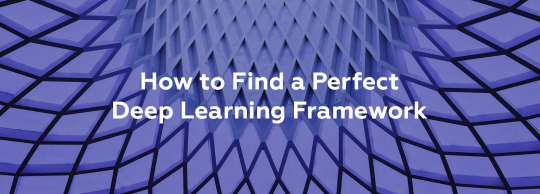
Many courses and tutorials offer to guide you through building a deep learning project. Of course, from the educational point of view, it is worthwhile: try to implement a neural network from scratch, and you’ll understand a lot of things. However, such an approach does not prepare us for real life, where you are not supposed to spare weeks waiting for your new model to build. At this point, you can look for a deep learning framework to help you.
A deep learning framework, like a machine learning framework, is an interface, library or a tool which allows building deep learning models easily and quickly, without getting into the details of underlying algorithms. They provide a clear and concise way for defining models with the help of a collection of pre-built and optimized components.
Briefly speaking, instead of writing hundreds of lines of code, you can choose a suitable framework that will do most of the work for you.
Most popular DL frameworks
The state-of-the-art frameworks are quite new; most of them were released after 2014. They are open-source and are still undergoing active development. They vary in the number of examples available, the frequency of updates and the number of contributors. Besides, though you can build most types of networks in any deep learning framework, they still have a specialization and usually differ in the way they expose functionality through its APIs.
Here were collected the most popular frameworks
TensorFlow

The framework that we mention all the time, TensorFlow, is a deep learning framework created in 2015 by the Google Brain team. It has a comprehensive and flexible ecosystem of tools, libraries and community resources. TensorFlow has pre-written codes for most of the complex deep learning models you’ll come across, such as Recurrent Neural Networks and Convolutional Neural Networks.
The most popular use cases of TensorFlow are the following:
NLP applications, such as language detection, text summarization and other text processing tasks;
Image recognition, including image captioning, face recognition and object detection;
Sound recognition
Time series analysis
Video analysis, and much more.
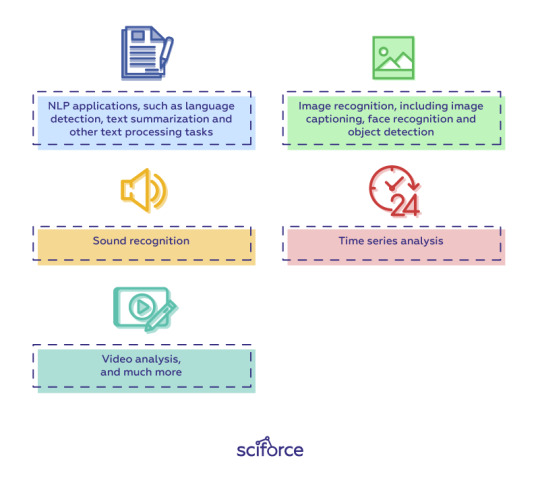
TensorFlow is extremely popular within the community because it supports multiple languages, such as Python, C++ and R, has extensive documentation and walkthroughs for guidance and updates regularly. Its flexible architecture also lets developers deploy deep learning models on one or more CPUs (as well as GPUs).
For inference, developers can either use TensorFlow-TensorRT integration to optimize models within TensorFlow, or export TensorFlow models, then use NVIDIA TensorRT’s built-in TensorFlow model importer to optimize in TensorRT.
Installing TensorFlow is also a pretty straightforward task.
For CPU-only:
pip install tensorflow
For CUDA-enabled GPU cards:
pip install tensorflow-gpu
Learn more:
An Introduction to Implementing Neural Networks using TensorFlow
TensorFlow tutorials
PyTorch

PyTorch
Facebook introduced PyTorch in 2017 as a successor to Torch, a popular deep learning framework released in 2011, based on the programming language Lua. In its essence, PyTorch took Torch features and implemented them in Python. Its flexibility and coverage of multiple tasks have pushed PyTorch to the foreground, making it a competitor to TensorFlow.
PyTorch covers all sorts of deep learning tasks, including:
Images, including detection, classification, etc.;
NLP-related tasks;
Reinforcement learning.
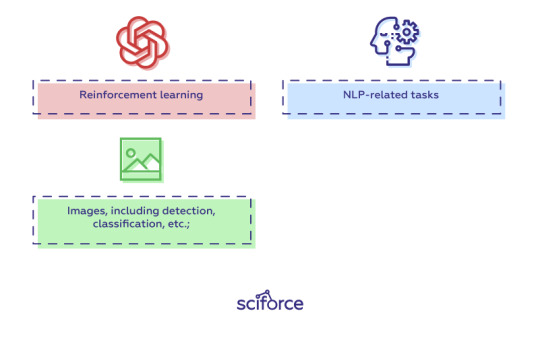
Instead of predefined graphs with specific functionalities, PyTorch allows developers to build computational graphs on the go, and even change them during runtime. PyTorch provides Tensor computations and uses dynamic computation graphs. Autograd package of PyTorch, for instance, builds computation graphs from tensors and automatically computes gradients.
For inference, developers can export to ONNX, then optimize and deploy with NVIDIA TensorRT.
The drawback of PyTorch is the dependence of its installation process on the operating system, the package you want to use to install PyTorch, the tool/language you’re working with, CUDA and others.
Learn more:
Learn How to Build Quick & Accurate Neural Networks using PyTorch — 4 Awesome Case Studies
PyTorch tutorials
Keras

Keras was created in 2014 by researcher François Chollet with an emphasis on ease of use through a unified and often abstracted API. It is an interface that can run on top of multiple frameworks such as MXNet, TensorFlow, Theano and Microsoft Cognitive Toolkit using a high-level Python API. Unlike TensorFlow, Keras is a high-level API that enables fast experimentation and quick results with minimum user actions.
Keras has multiple architectures for solving a wide variety of problems, the most popular are
image recognition, including image classification, object detection and face recognition;
NLP tasks, including chatbot creation
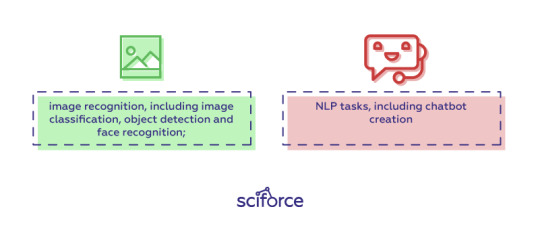
Keras models can be classified into two categories:
Sequential: The layers of the model are defined in a sequential manner, so when a deep learning model is trained, these layers are implemented sequentially.
Keras functional API: This is used for defining complex models, such as multi-output models or models with shared layers.
Keras is installed easily with just one line of code:
pip install keras
Learn more:
The Ultimate Beginner’s Guide to Deep Learning in Python
Keras Tutorial: Deep Learning in Python
Optimizing Neural Networks using Keras
Caffe
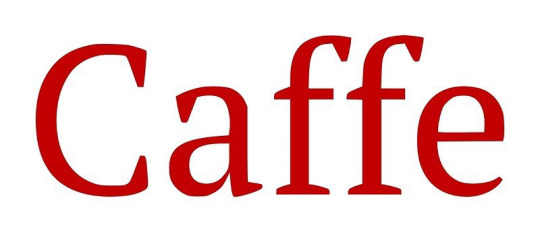
The Caffe deep learning framework created by Yangqing Jia at the University of California, Berkeley in 2014, and has led to forks like NVCaffe and new frameworks like Facebook’s Caffe2 (which is already merged with PyTorch). It is geared towards image processing and, unlike the previous frameworks, its support for recurrent networks and language modeling is not as great. However, Caffe shows the highest speed of processing and learning from images.
The pre-trained networks, models and weights that can be applied to solve deep learning problems collected in the Caffe Model Zoo framework work on the below tasks:
Simple regression
Large-scale visual classification
Siamese networks for image similarity
Speech and robotics applications
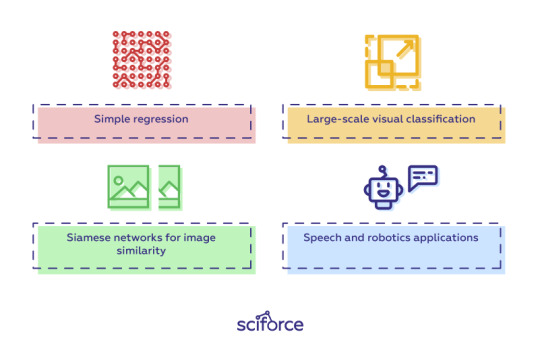
Besides, Caffe provides solid support for interfaces like C, C++, Python, MATLAB as well as the traditional command line.
To optimize and deploy models for inference, developers can leverage NVIDIA TensorRT’s built-in Caffe model importer.
The installation process for Caffe is rather complicated and requires performing a number of steps and meeting such requirements, as having CUDA, BLAF and Boost. The complete guide for installation of Caffe can be found here.
Learn more:
Caffe Tutorial
Choosing a deep learning framework
You can choose a framework based on many factors you find important: the task you are going to perform, the language of your project, or your confidence and skillset. However, there are a number of features any good deep learning framework should have:
Optimization for performance
Clarity and ease of understanding and coding
Good community support
Parallelization of processes to reduce computations
Automatic computation of gradients
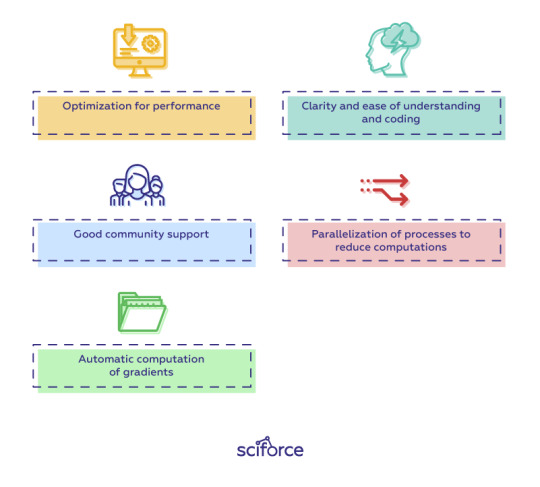
Model migration between deep learning frameworks
In real life, it sometimes happens that you build and train a model using one framework, then re-train or deploy it for inference using a different framework. Enabling such interoperability makes it possible to get great ideas into production faster.
The Open Neural Network Exchange, or ONNX, is a format for deep learning models that allows developers to move models between frameworks. ONNX models are currently supported in Caffe2, Microsoft Cognitive Toolkit, MXNet, and PyTorch, and there are connectors for many other popular frameworks and libraries.
New deep learning frameworks are being created all the time, a reflection of the widespread adoption of neural networks by developers. It is always tempting to choose one of the most common one (even we offer you those that we find the best and the most popular). However, to achieve the best results, it is important to choose what is best for your project and be always curious and open to new frameworks.
10 notes
·
View notes
Text
Machine Learning Training in Noida
Apache MXNet on AWS- For quick training machine learning applications
Need a quick and scalable training and inference framework. Try Apache MXNet. With its straightforward and concise API for machine learning, it will fulfill your need without a doubt.

MXNet includes the extremely vital Gluon the interface that lets developers of all skill levels to get easily started with deep learning on the cloud, on mobile apps, and on edge devices. Few lines of Gluon code can enable you to build recurrent LSTMs, linear regression and convolutional networks for speech recognition, recommendation, object detection and personalization.
Amazon SageMaker, a top rate platform to build, train, and deploy machine learning models at scale can be relied on to get started with MxNet on AWS with a fully-managed exceptional experience. AWS Deep Learning AMIs can also be used to build custom environments and workflows not only with MxNet but other frameworks as well. These frameworks are TensorFlow, Caffe2, Keras, Caffe, PyTorch, Chainer, and Microsoft Cognitive Toolkit.
Benefits of deep learning using MXNet
Ease-of-Use with Gluon
You don’t have to sacrifice training speed in your endeavor to prototype, train, and deploy deep learning models by employing MXNet’s Gluon library that provides a high-level interface. For loss functions, predefined layers, and optimizers, Gluon offers high-level abstractions. Easy to debug and intuitive to work with flexible structure is provided by Gluon.
Greater Performance
Tremendously large projects can be handled in less time simply because of distribution of deep learning workloads across multiple GPUs with almost linear scalability is possible. Depending on the number of GPUs in a cluster, scaling is automatic. Developers increase productivity by saving precious time by running serverless and batch-based inferencing.
For IoT & the Edge
MXNet produces lightweight neural network model representations besides handling multi-GPU training and deployment of complex models in the cloud. This lightweight neural network model representations can run on lower-powered edge devices like a Raspberry Pi, laptop, or smartphone and process data in real-time remotely.
Flexibility & Choice
A wide array of programming languages like C++, R, Clojure, Matlab, Julia, JavaScript, Python, Scala, and Perl, etc. is supported by MXNet. So, you can easily get started with languages that are already known to you. However, on the backend, all code is compiled in C++ for the best performance regardless of language used to build the models.
1 note
·
View note
Text
Blog | Pitch Detection Using Autocorrelation Method | MATLAB
Implement a MATLAB project of Speech Processing which will find pitch periods of speech signal using the Autocorrelation method
0 notes
Text
0 notes
Text
Matlab Applications
Applications of Matlab:
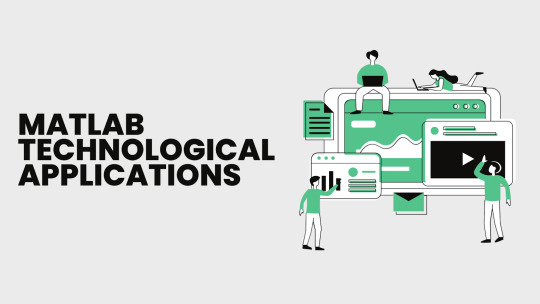
The current advancements in MATLAB have made it a very competitive tool for Artificial Intelligence, Robotics, Image Processing, Wireless Communication, Machine Learning, Data Analytics, and other fields. MATLAB may be used as a tool for simulating diverse electrical networks. Although it has a wide range of applications, circuit branches and mechanical engineering employ it primarily to tackle a fundamental set of problems. It is a tool that makes it possible to compute, programme, and visually represent the outcomes.
The matrix or array is the fundamental data type in MATLAB, as the name would imply. Professionally constructed MATLAB toolboxes let you materialise your fantasies. Programming in MATLAB is very similar to programming in C, so you just need to brush up on your fundamental programming knowledge.
MATLAB is used in the applications listed below.
Statistics and artificial intelligence (ML)
For programmers, MATLAB's toolbox can be quite useful. It is simple to implement statistical techniques like descriptive or inferential statistics. The same is true for machine learning. Modern challenges can be solved using a variety of models. Big data applications can also utilise the employed methods.
Fitting curves
The toolbox for curve fitting aids in the analysis of data distribution patterns. It is possible to anticipate future trends once a specific trend, which can be a curve or surface, has been obtained. Additional graphing, integral and derivative calculations, interpolation, and other tasks are possible.
Control systems of a certain sort are attainable. Bode plots, Nyquist plots, open-loop and closed-loop dynamics, controllability and observability, and other factors can be acquired One can visualise various controlling methods like PD, PI, and PID. Either time or frequency domain analysis is possible.
Processing of Signals
Various engineering disciplines teach signals, systems, and digital signal processing. But MATLAB offers the chance to properly visualise this. On any given signal, different transforms, including Laplace, Z, and others, can be applied. A theorem may be verified. Either time or frequency domain analysis is possible. There are numerous available built-in functions.
Mapping
There are numerous uses for mapping across numerous industries. For instance, the MapReduce tool, which has numerous real-world applications, is quite important in the field of big data. Analysis of theft or the detection of financial fraud, regression models, and contingency.Data mapping can be used for analysis, social media prediction techniques, data monitoring, etc.
In-depth learning
It's a type of machine learning that can be used for picture analysis in medicine, speech recognition, and financial fraud detection. You can use a variety of technologies, including time-series analysis, artificial neural networks (ANN), and fuzzy logic.
Analyzing finances
Before beginning any project, an entrepreneur must conduct a thorough investigation and a financial analysis to determine the best course of action. All of the necessary tools are contained in MATLAB. It is possible to identify components like profitability, solvency, liquidity, and stability. It is possible to evaluate business valuation, capital budgeting, cost of capital, etc.
Processing images
The most common application that we observe almost every day are bar.When delivering data from distant satellites and receiving and decoding it in the same manner, digital image processing also plays a significant role. All of these applications can be supported by existing algorithms.
Analysis of text
Sentiment analysis can be performed on the text. Within a few milliseconds of entering any text, Google returns millions of search results. Text analysis makes all of this possible. In forensics, handwriting comparison is possible. One piece of software that can do everything, with no restrictions on applications.
Designing electric vehicles
Used for modeling electric vehicles and analyze their performance with a change in system inputs. Speed torque comparison, designing and simulating of a vehicle, whatnot.
Aerospace
This toolbox in MATLAB is used for analyzing offers resources for speech analysis, acoustic measurement, and audio processing. It also offers methods for extracting audio and speech features and transforming audio signals.
Conclusion:
It offers a sizable library of mathematical operations for solving ordinary differential equations and performing linear algebra, statistics, Fourier analysis, filtering, optimization, and numerical integration. It offers tools for creating personalised plots as well as built-in graphics for visualising data.
0 notes
Text
Data Science Technology & Its Usage
Data Science has emerged out as one of the popular fields of 21st Century. Companies hire Data Scientists and Data Analyst to help them gain insights about the market and to improve their products and services in better way.
Data Scientists work as decision-makers and are responsible for analysing and for handling a large amount of oragnized or predefined data as well as raw data which have to be first oragnized to analyze.
Data science is the field of study that consists of domain expertise, programming skills, and knowledge of mathematics and statistics to extract meaningful insights from data. Data scientists apply machine learning with python algorithms to numbers, text, images, video, audio, and more to produce artificial intelligence (AI) and deep learning to perform tasks that work on the human intelligence to make every field more precise. In turn, these systems generate insights which analysts and business users can translate into tangible business value.
The field includes preparing data for analysis, formulating data science problems, analysing data, developing data-driven solutions, and presenting findings to inform high-level decisions in a broad range of application domains. As such, it incorporates skills from computer science, statistics, information science, mathematics, information visualization, data sonification, data integration, graphic design, complex systems, communication and business.
Brillica Services Provides best project based training course in Data Science using python Machine Learning in Dehradun,Uttarkahnd & Delhi.
Why Data Science training course is Important?
In 80s, "data analysis", acknowledged the emergence of a new discipline focused on data of various origins and forms, combining established concepts and principles of statistics and data analysis with computing.
With every increasing day, most companies are coming realizing the importance of data science, Artificial Intelligence, and machine learning. Regardless of industry or the size, organizations those wish to remain competitive in the age of need of data to efficiently develop and implement data science capabilities or risk being left behind.
Uses of data science:
Internet Search
Digital Advertisements (Targeted Advertising and re-targeting)
Recommender Systems
Advanced Image Recognition
Speech Recognition
Gaming
Price Comparison Websites
Airline Route Planning
Fraud and Risk Detection
Delivery logistics
Healthcare
Augmented Reality
A best data scientist is the one who creates programming code, and combines it with statistical knowledge to create insights from data. He is the one responsible for extracting, manipulating, pre-processing and generating predictions from the information provided.
Tools Used In Data Science:
Sas, Apache Spark, MATLAB, Excel, Tableau, Jupyter etc.
0 notes
Text
Get Best Online Training in Data Analytics Course
In this module, you will learn about the long-term investments of an organization like the development of recent crops, new machinery, new merchandise, and analysis growth projects, which require Capital Budgeting. Mu Sigma, Fractal Analytics, Accenture Analytics, Manthan, LatentViewm, Tiger Analytics, AbsolutData, Evalueserve are some of the top firms in India to work with after finishing the info analytics course. SQL, C (C++), Java, Javascript, MATLAB, Scala, Swift are some of the broadly used programming languages for data analytics. Newly graduates or working professionals each can do an information analytics course with both technical or non-technical backgrounds.
The rising call for skilled knowledge analysts to fill the excessive-paying positions needs to be fulfilled. If you're one who likes to play with knowledge, a knowledge analytics course in Delhi is exactly for you. Using data, organizations can carry out competitive evaluations to understand the strengths and weaknesses of business opponents. The Post Graduate Program in Data Science equips you with the relevant data and expertise to get into the managerial careers with the most effective of analytics companies or swap into the analytics roles within your present organization. You can study more about the alumni profession transitions by clicking here. “The most stunning side of this program is that you are able to apply the learnings to the real-life business analytics issues as well. RNNs and their mechanisms An artificial neural network that uses sequential information or time-series knowledge is identified as a Recurrent Neural Network. It can be used for language translation, pure language processing, speech recognition, and picture captioning.
Data Analytics Courses
If you’re a job seeker with advertising expertise, you presumably can turn out to be a marketing consultant with power in information analysis by becoming a member of a Data Analytics Training in Delhi. If you’re mainly a software program engineer, with knowledge expertise that you just learn in Data analytics Training in Delhi, you'll find a way to enter a career as an information engineer. Data Analytics Course in Delhi is job-oriented coaching and that can help you discover a job quickly. We facilitate students with no-cost study materials, soft copies of PDFs, video training, sample questions for respective certification, and interview questions along with lab guides made available on our website for fast entry. Along with technical coaching and course, we manage no-price sessions on character growth spoken English, group discussion, mock interview, and presentation abilities to develop an excessive degree of confidence in students.
I would like to highlight a number of factors about my affiliation with Besant Technologies. They make you understand an idea until they're satisfied you have gotten a good grip over it. The second upside is definitely the amount of friendliness of their strategy. Thirdly, Besant presents extra support to college students with a weaker understanding of the sector of IT.
You can reach us at:
Name: ExcelR- Data Science, Data Analyst, Business Analyst Course Training in Delhi
Address: M 130-131, Inside ABL WorkSpace,Second Floor, Connaught CircleConnaught PlaceNew Delhi,110001.
Phone: 09632156744.
Data Analytics Courses
0 notes
Text
Python Libraries
Introduction
Python is a feature-rich programming language. Thanks to one of the most substantial open source communities, Python has numerous libraries created for numerous fields in programming. Python has actually devoted libraries for machine learning, information science, data analytics, image processing, web scraping, web development, natural language processing, etc . In this post, we will see how to set up and import various libraries in Python for different jobs. We will also take a look at a few of the best Python libraries developed for newbies and will see some examples of their use.
What are Python Libraries? In easiest terms, Python libraries are collections of recyclable source code written in Python. We can describe the Python libraries as collections of various modules. Modules are files including source codes for particular tasks. Python has an inbuilt standard library that is instantly set up when we install Python on our machines. The standard Python library includes more than 200 modules for fundamental operations like managing I/O, file handling, arithmetic operations, coercions, and a lot more.
What are a few of the best Python libraries for novices? Python has a great deal of open-source libraries that can be imported and used by any developer. In this area, we will take a look at some of the best Python libraries for novices.
Numpy Numpy is first in the list of finest Python libraries for newbies. It has been developed for numerical estimations and supports variety processing. Numpy provides various performances for processing multidimensional ranges and matrices. Due to its effectiveness in numerical estimations, numerous other Python libraries like Pandas and Scipy are built utilizing Numpy. Numpy deals efficient implementation of many mathematical functions and matrix operations. With data structures like 1-d selections, 2-d arrays, and masked ranges, Numpy also supplies assistance for intricate mathematical operations like integration which makes it an excellent replacement for MATLAB. Additionally, Python is open source and MATLAB is accredited, making Numpy a popular choice for programmers.
Pandas Pandas, equipped with its 2 popular data structures, namely Series and DataFrame, is among the very best tools to process tabular or time-series information. Having tools for quickly organizing, checking out, representing, and controling data, Pandas is a must to discover library for information science. It has special functions for indexing, positioning, data labelling, and handling missing out on worths. We can import information from Excel spreadsheets, JSON files, HDF5, and CSV files directly into pandas Dataframes and process them with so relieve that even a non-programmer can understand the code. For its capability to handle information efficiently and being so simple to find out, Pandas finds its location in the list of the very best Python libraries for beginners.
Matplotlib Matplotlib has been developed for plotting charts in Python. We can use matplotlib to create high-quality charts and numerous types of other plots from tabular or direct data. We can also develop several plots in a single image for contrasts. Matplotlib library can also be incorporated with other libraries such as ggplot, seaborn, and basemap for mapping various kinds of charts and plots.
OpenCV OpenCV is a Python library designed for image processing. It is a perfect tool for image processing as it allows users to read and compose images at the same time. We can diagnose and control images and videos for better detailing using functions readily available in OpenCV. It utilizes Numpy arrays to process images and is really effective in regards to cost of execution. A major downside with OpenCv is that it has no correct documents. Despite this, you can discover it utilizing other sources and carry out image processing extremely quickly in Python.
Scipy Scipy is built on Numpy and is designed for technical and clinical calculations. Scipy includes various modules created for jobs like integration, optimization, stats, and linear algebra. It likewise offers assistance for image processing as it utilizes Numpy selections, and images are represented utilizing varieties. Being an open-source library, it likewise has great online forums where we can go over any concerns we face while programs.
SQLAlchemy SQLAlchemy is a database abstraction library designed for newbies. With an easy-to-understand interface and adjustable system, SQLAlchemy offers users a simple way to access and control databases. It supports a wide range of databases and includes numerous constant patterns and designs, which have actually been designed for effectiveness. With SQLAlchemy, we can also carry out WASTE operations in batches. It likewise features performances, which allow us to create database schemas and things models from scratch. All these features make SQLAlchemy an excellent option for database control tools for novices.
wxPython wxPython is an alternative to Tkinter. It is a graphical user interface toolkit, which can be used to handle and tailor layout styles. With cross-platform assistance and easy installation and usage, wxPython is a good tool for beginners to start with GUI design and development.
BeautifulSoup BeautifulSoup is a library created for parsing HTML and XML files. We can straight carry out web scraping and extract data from web pages utilizing this library. Being an open-source library, it has a large designer neighborhood and proper documentation that includes the library. It makes BeautifulSoup a user friendly tool since we can read the documents to search for use of the functionalities. Furthermore, we can also ask questions on online forums when we experience any issue while using it.
Requests Requests is a Python library used for managing HTTP requests. It enables us to examine, customize, license and configure HTTP demands using common HTTP methods. We can deal with customized headers, SSL certificates, Cookies, connection pooling, thread security, and authentication with the help of functions and approaches supplied by the Requests library. With the Demands library, we can likewise work quickly with files as it permits us to publish multiple files in a single attempt. Additionally, it offers automated unzipping, which permits us to bring back and easily recuperate compressed files.
TextBlob TextBlob is a library that offers natural language processing functionalities with utmost ease. With less than 10 lines of code, we can carry out natural language processing on any text information with TextBlob which makes it the first choice for novices who are going to carry out natural language processing in Python. TextBlob uses complex performances like tokenization, lemmatization, translation, N-gram detection, and part of speech marking which makes it among the best Python libraries for newbies.
Summary
Python is one of the wealthiest programming languages in terms of libraries and features. In this article, We have actually talked about Python libraries, their installation, and usage. We also looked at a few of the very best Python libraries for novices as well as for machine learning and information science. To dive deeper into their usage, you can try hands-on projects, which will help you understand the features of Python programming and its libraries in a better method. You can also attempt artificial intelligence and information science courses on InsideAIML to gain a deep understanding of ideas along with hands-on experience.
0 notes
Text
Experimental Instrument
I am thinking of creating a software-based instrument since I don’t have access to a lot of hardware materials right now. Since I collected a lot of sounds for the schizophonia project as well as sound walks, I want to somehow find a way to combine them to create a new sound using software.
I have learnt about using LPC analysis to re-synthesize or cross-synthesize sounds in oneof my subjects. According to Wikipedia, “Linear predictive coding (LPC) is a method used mostly in audio signal processing and speech processing for representing the spectral envelope of a digital signal of speech in compressed form, using the information of a linear predictive model.LPC is the most widely used method in speech coding and speech synthesis.”
I plan to take a deeper look into LPC in order to possibly create new sounds by cross-synthesis. For proof-of-concept, I plan to use MATLAB software sinceI’m familiar with it.
Stay tuned for audio test samples!
0 notes
Photo

what Sap can do|SAP training in Pune|Guidancepoint
Sap serves in various different arena like in automation, data integration, sales distribution, consulting and many more .These sap concept are demonstrated by guidancepoint we provide the best sap training in pune. We also provide projects with training. So hitch up with guidance point. It is also known for providing computer it projects in pune. For more information visit us: https://bit.ly/2vxmAcg or contact us: 9028786784.
#SAP training in pune#iot projects in pune#Matlab training in Pune#speech processing projects using matlab#java training in pune#Matlab based signal processing projects#Antenna Project using matlab
0 notes